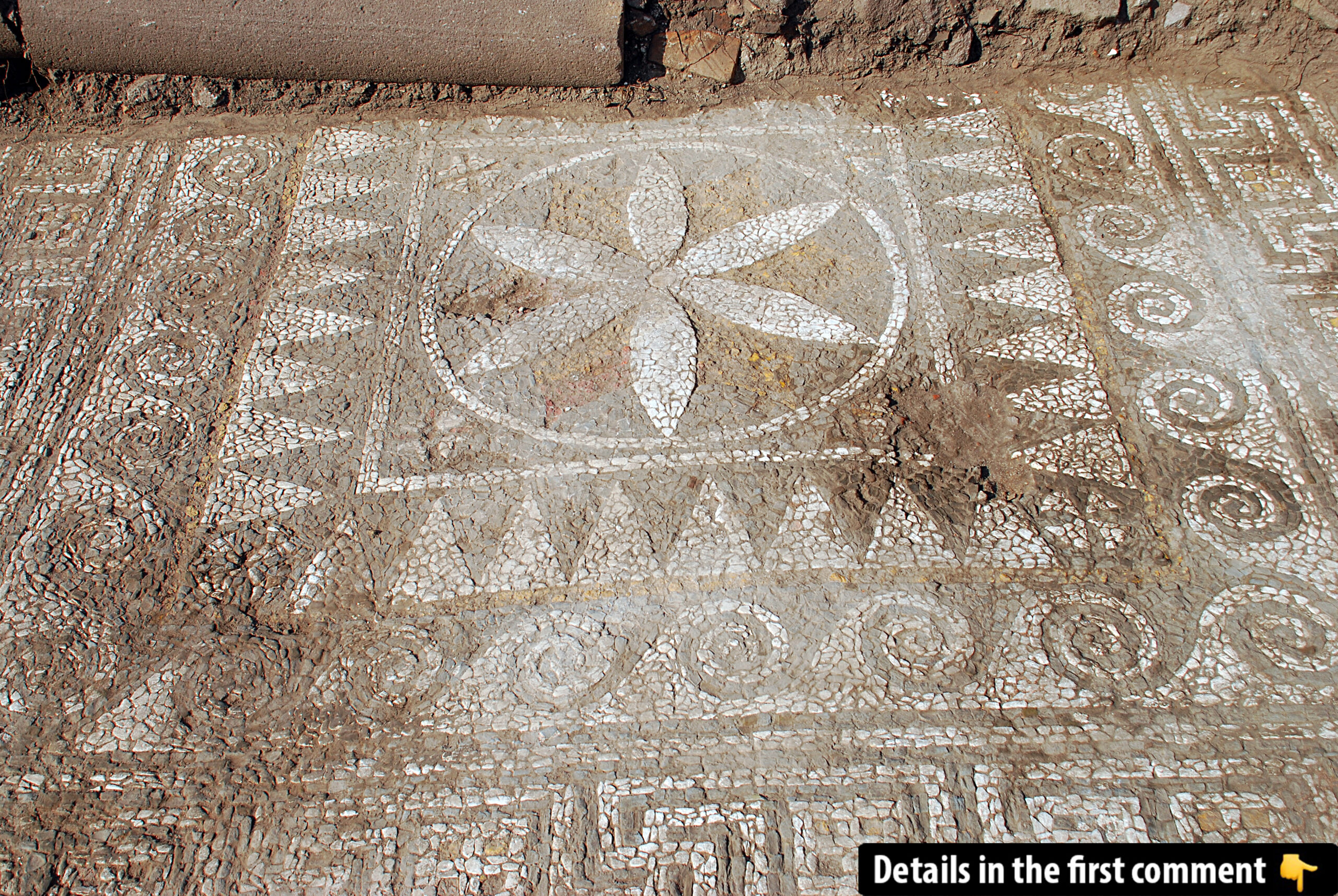Assos, an ancient city perched on the scenic hills of the Aegean coast, has long been a site of intrigue and fascination for historians, archaeologists, and tourists alike. In recent years, the city has once again captured the world’s attention with a remarkable archaeological discovery: a 2,200-year-old Hellenistic mosaic and a monumental tomb dating back to the Roman period. These discoveries provide a deeper understanding of Assos’ rich history, offering new insights into its cultural, philosophical, and architectural significance. In this article, we will explore these groundbreaking findings and their implications for our knowledge of ancient civilizations in Anatolia.
Discovery of the 2,200-Year-Old Hellenistic Mosaic
One of the most significant discoveries made during the 44th season of excavations at Assos is the remarkable 2,200-year-old mosaic found near the ancient gymnasium. The mosaic, composed of polygonal stones in three colors, features an intricate design of geometric and floral patterns. At its center is a large six-leaf rosette, surrounded by a circle inside a square border, with crosses in circles at each corner. The next band consists of triangles, while the outermost band displays a wave-like motif, complemented by a Greek key meander band.
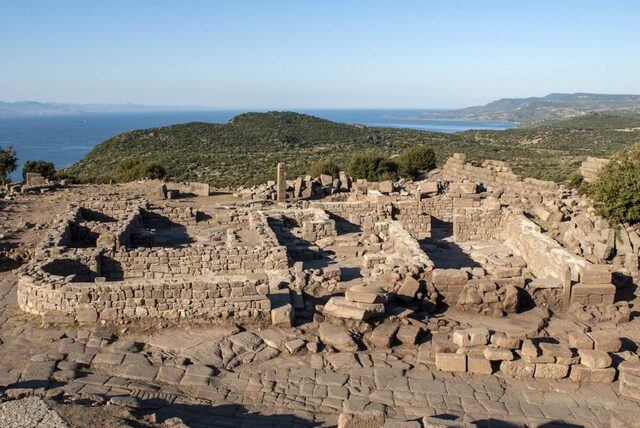
This mosaic is one of the oldest and best-preserved examples of Hellenistic art in Anatolia. Typically, such mosaics are found in small fragments, but this one has survived largely intact due to its unique preservation. It was originally the floor of a gymnasium, a structure built during the Hellenistic period for physical and social activities. When the building was later repurposed into a private residence during the Byzantine era, the mosaic remained undisturbed, a testament to its enduring appeal.
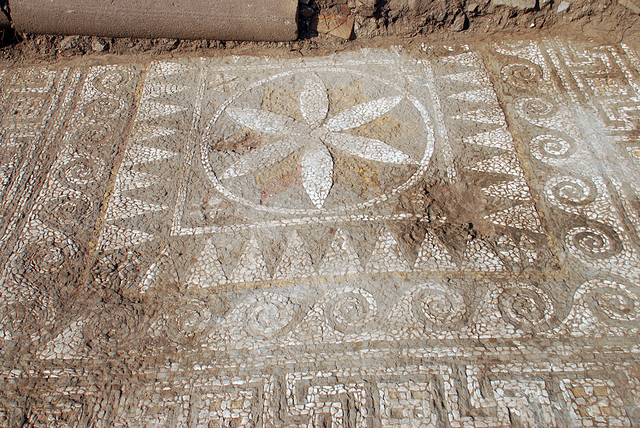
The intricate craftsmanship of the mosaic not only showcases the advanced artistic techniques of the time but also highlights the importance of public spaces in ancient Greek and Roman cities. The use of geometric patterns and symbols in the mosaic is indicative of the intellectual and cultural environment of Assos during the Hellenistic period. It serves as a visual representation of the values and aesthetics that permeated the city at the time, offering a glimpse into the daily life and cultural practices of its inhabitants.
Video
Watch the video to explore the 2,200-year-old mosaic and monumental tomb revealed during Assos excavations! Don’t miss this incredible archaeological discovery.
The Role of the Gymnasium and Its Transformation into a Residential Area
The gymnasium, where the mosaic was found, was a central part of Hellenistic urban life. In ancient Greece and Rome, gymnasiums were not only places for physical exercise but also venues for intellectual discussions, social gatherings, and philosophical debates. Assos, known for its philosophical heritage and its association with the famous philosopher Aristotle, would have undoubtedly used such spaces to foster a vibrant intellectual community.
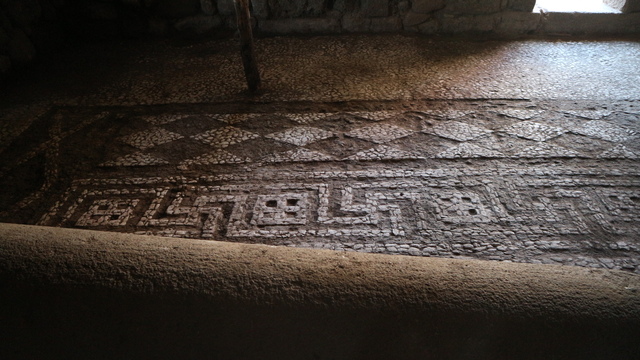
Over time, however, the gymnasium was converted into a private residence during the Byzantine period. Despite this change in function, the mosaic remained well-preserved, offering invaluable insight into the architectural and artistic practices of the time. The fact that the mosaic has survived largely intact is a testament to the exceptional preservation conditions in Assos, particularly given the region’s history of destruction and rebuilding.
Excavation of the Monumental Tomb: A Heron
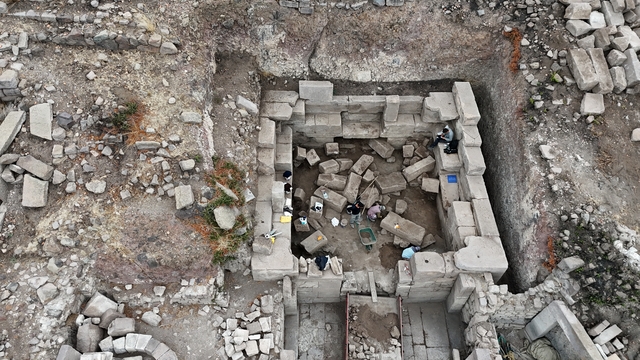
In addition to the stunning mosaic, archaeologists also uncovered a monumental tomb during the latest excavation season. Initially thought to be a fountain, the structure was later identified as a “heroon” — a shrine dedicated to a cult hero of Greco-Roman religion. The heroon likely served as a tomb for a prominent figure, possibly the founder of the city or a figure of great importance to the Assos community.
The heroon is an important discovery, as it sheds light on the religious and cultural practices of Assos during the Roman period. In ancient Greece and Rome, hero cults played a significant role in religious life, with tombs dedicated to revered figures often becoming places of pilgrimage and worship. The monumental tomb in Assos would have been a focal point for the community, symbolizing the city’s connection to its past and its reverence for its founders and heroes.
The discovery of this tomb adds another layer to our understanding of Assos’ history. While the city’s later Roman and Byzantine periods are well-documented, the earlier history of Assos remains somewhat elusive. The heroon, along with the newly discovered mosaic, offers crucial evidence of the city’s cultural and religious practices during the Hellenistic and Roman periods.
Assos as a Center for Philosophy and Architecture
Assos was not just an important port city but also a center for philosophy and intellectual thought. The city’s connection to Aristotle, who spent time in Assos and mentored the city’s rulers, underscores its significance in the history of Western thought. Assos attracted prominent figures from across the ancient world, and its residents were known for their commitment to intellectual pursuits.
In addition to its philosophical legacy, Assos was also renowned for its architectural achievements. The city’s most famous structure, the Temple of Athena, dates back to the 6th century BC and remains one of the best-preserved examples of ancient Greek architecture in the region. The discovery of the Hellenistic mosaic and the Roman-era heroon further highlights Assos’ architectural importance, offering a glimpse into the city’s artistic and cultural evolution over time.
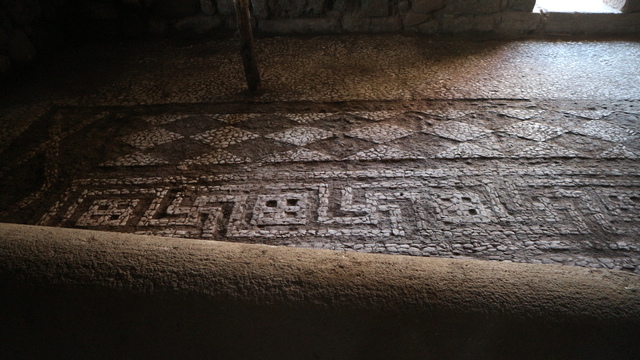
Historical Context: Assos and Its Evolving Role in Ancient Civilizations
Assos’ history is deeply intertwined with the political and cultural changes of the ancient world. Founded by colonists from the island of Lesbos in the 7th century BC, Assos grew into a thriving port city and became an important center for trade, culture, and philosophy. The city was conquered by Alexander the Great in 334 BC and subsequently fell under the control of his successors in the Seleucid dynasty. Later, it became part of the Kingdom of Pergamum before eventually coming under Roman rule in 133 BC.
Throughout its history, Assos was shaped by the different civilizations that occupied it, each leaving its mark on the city’s architecture, culture, and society. The Hellenistic period, in particular, was a time of great artistic and intellectual flourishing, as evidenced by the discoveries of the mosaic and the heroon.
Modern Discoveries and Tourism: Assos Today
Today, Assos is a UNESCO World Heritage site and a popular tourist destination, attracting visitors from around the world with its stunning ruins and breathtaking views. The ongoing excavations, led by the Assos excavation team, continue to uncover new discoveries that shed light on the city’s rich history. These findings not only enhance our understanding of ancient civilizations but also serve as a reminder of the importance of preserving cultural heritage for future generations.
The discoveries of the Hellenistic mosaic and the Roman heroon further cement Assos’ status as a vital archaeological site, offering valuable insights into the ancient world. As excavations continue, Assos will undoubtedly reveal more secrets about its past, enriching our understanding of the ancient Mediterranean world and its cultural legacy.
Video
Watch the video to see the world’s oldest mosaic unearthed in central Turkey! Don’t miss this amazing discovery and its historical significance.
Conclusion: The Lasting Legacy of Assos
The discoveries at Assos — the 2,200-year-old mosaic and the monumental tomb — provide a fascinating glimpse into the city’s history and its cultural, philosophical, and religious significance. These findings not only deepen our understanding of Assos but also challenge the traditional perception of ancient Greek and Roman art and architecture. As excavations continue, Assos will undoubtedly continue to offer new insights into the ancient world, reminding us of the enduring legacy of this remarkable city.
